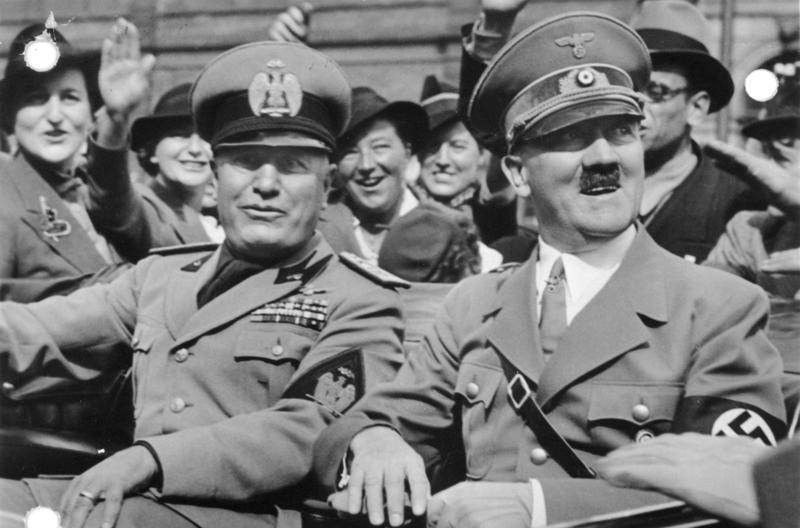English Across the Curriculum
World War II
Causes of World War II
There are many causes of the war and some of them go back to the end of the First World War. The end of World War I and the peace that followed in 1919 changed the face of Europe and the borders of countries completely. New nations emerged and countries that lost the war, especially Germany and Austria had to give up a lot of land. They also had to pay money to other countries for the damages and destruction that happened during the war.
Economic Problems
After the war many countries were in debt. The losers had problems paying reparations and the winners borrowed a lot of money from the United States which they could not pay back. Inflation in many countries left people without any savings. In the 1930s the Great Depression, starting out in the USA, spread to Europe and stopped the continent's recovery. Millions of people were out of work and poverty rose.
Feeding the poor in Germany in 1931
Image : Bundesarchiv, Bild 183-T0706-501 / CC-BY-SA 3.0, CC BY-SA 3.0 DE, via Wikimedia Commons
Political Movements
The problems after the war made the governments in many countries weaker and weaker. Two movements became more and more powerful: Communism, known as "the Left", called for a revolution of the working class. Fascism, known as "the Right", wanted a strong national government
The Axis and Allied Powers
Two groups of nations fought against each other during the Second World War.
During the 1930s Germany, Italy and Japan led a group of nations called the Axis. The leaders of these countries were dictators. They wanted their own countries to grow and others to become weaker. In the years before the beginning of World War II all three Axis powers had strengthened and modernized their armies.
In the 1930s the Nazi Party rose to power in Germany. In 1933 the party's leader Adolf Hitler was appointed chancellor and became known as "der Führer". He promised to take revenge on the countries that had defeated Germany in the First World War and make Germany the most powerful country in the world. He also claimed that only Germans were the true race and wanted to get rid of Jews, Communists, and other weaker people.
In Italy Benito Mussolini, known as the "Il Duce", became the leader of the Fascist Party, which gained many supporters. He promised to bring law and order to the country and help solve its economic problems.

Dictators of Axis powers Italy and Germany : Mussolini and Hitler
Image: Bundesarchiv, Bild 146-1969-065-24 / CC-BY-SA 3.0, CC BY-SA 3.0 DE, via Wikimedia Commons
The Axis Powers invaded other countries and expanded their territory. At the beginning of the 1930s Japan invaded Manchuria because it had a lot of raw materials. In 1938 it attacked China and later on expanded to Southeast Asia. In 1935 Italy took over Ethiopia. Germany started its conquest of foreign territories by invading Austria. Italy and Germany also sent soldiers to help another dictator, Francisco Franco, in the Spanish Civil War.
The Allies were made up of a total of 50 countries. They were led by Great Britain, the Soviet Union, France, China and the United States and opposed the Axis.
The Beginning of the War
On September 30, 1938 Great Britain, France and Germany signed the Munich Agreement. It gave Germany the right to take over the Sudetenland, a part of Czechoslovakia. The two Allies hoped it would satisfy Hitler and keep them out of the war. The agreement, however, was broken and Hitler not only invaded the Sudetenland but took over all of Czechoslovakia.
It was clear that Poland, on Germany's eastern border, would be the next target. Great Britain and France promised to help Poland if it were attacked. In August 1939 Germany and the Soviet Union signed a "non-aggression pact", in which they promised not to attack each other. Germany did this so that it would not have to fight on two fronts.
On September 1, 1939 Germany invaded Poland and World War II began.

Hitler watches as German soldiers invade Poland
Image: Bundesarchiv, Bild 183-S55480 / CC-BY-SA 3.0, CC BY-SA 3.0 DE, via Wikimedia Commons